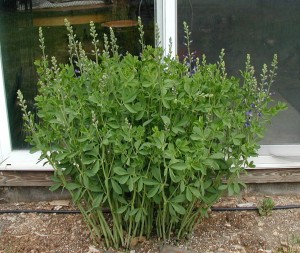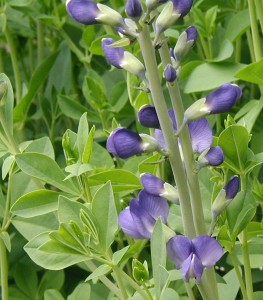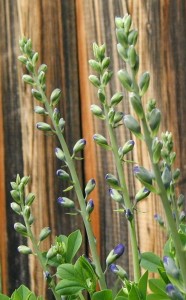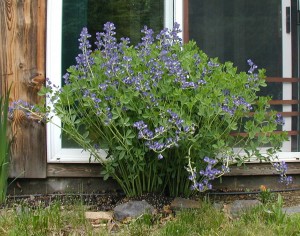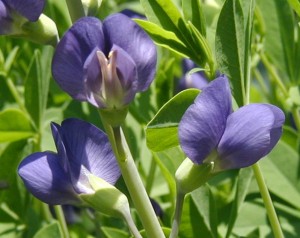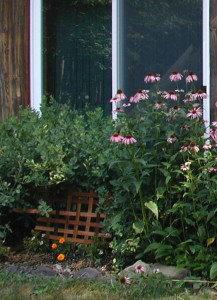2010 was the first year that we witnessed flowers on this member of the Orchid Family, Orchidaceae. From a florist’s point of view the strap-like blossom of Whorled Pogonia, Isotria verticillata, is nothing to write home about. Heck, it’s barely noticeable that it’s a flower, unless you know what to look for.
Whorled pogonia rises up from the ground with a single, hollow stem. The stems are light-colored grey and smooth.
At the top of the 6 – 12 inch stem is a whorl of five leaves, and sometimes six.
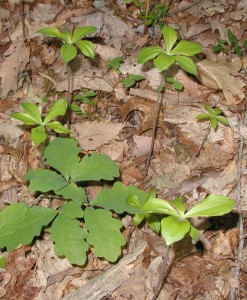
I’m assuming that the smaller plants in the photo above are later or smaller versions of the taller plants, instead of the rare Small Whorled Pogonia, Isotria medeoloides. Until I saw some of the Whorled Pogonia blooming this year I was uncertain which pogonia we had. The two Isotria species appear the same except for stature and the length of the sepals.
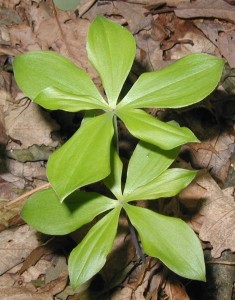
Leaves are pointed ovals that are widest near the tips.

Linear or parallel veins in the leaves help to identify the pogonia as a member of the Monocotyledon which include the grasses, grains, lilies and orchids.
From the center of the whorl of leaves arises a singular flower. A flower stalk holds the blossom about an inch above the circle of leaves. The blossom arches over to one side. Three muted yellow petals enclose the stamens and inner flower parts.
The blossom itself appears somewhat closed as it is enveloped by the very long, strap-like sepals. The sepals are brown to dark maroon with a shiny surface and they stretch out about three inches long. The sepals of Small Whorled Pogonia may be about an inch long in comparison.

The extra long sepals are diagnostic for distinguishing Whorled Pogonia from Small Whorled Pogonia.

Photo taken 15 May 2010.


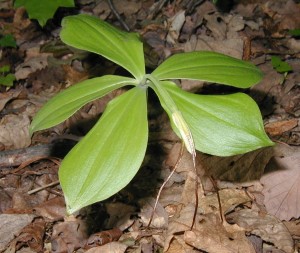
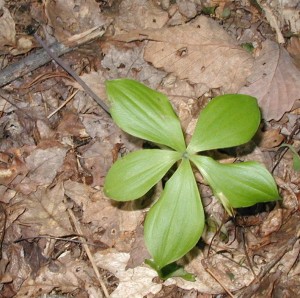
Looking down on the orchid…can you see its flower? The stem enters the ground in the upper left of the photo above.
Very few of the whorled pogonia were blooming. Even though there were only 3 of 68 plants blooming in one area, and slightly north a different patch had a single plant blooming in a group of eleven, I was very excited to see them flowering. I’ve watched these orchids for years now, wondering which pogonia I was looking at. Now I know that we have Whorled Pogonia in our forest.
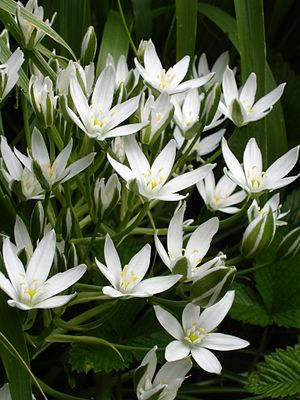

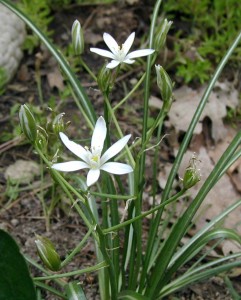
![Reblog this post [with Zemanta]](http://img.zemanta.com/reblog_e.png?x-id=1e4e470f-26a5-46ab-83c9-e40ce0aa90b3)
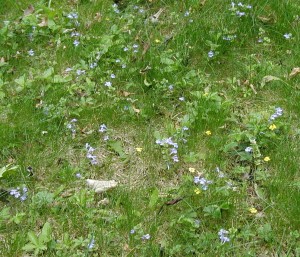
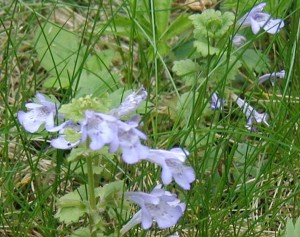
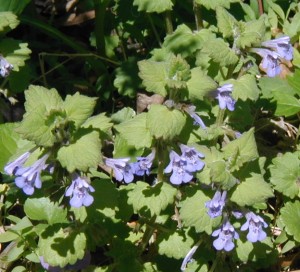
![Reblog this post [with Zemanta]](http://img.zemanta.com/reblog_e.png?x-id=8da3ba46-8017-4283-9d3f-287c7b2c80b3)
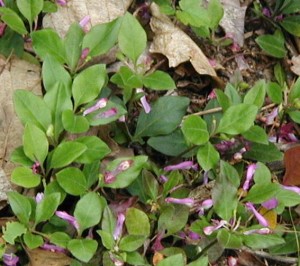
![Reblog this post [with Zemanta]](http://img.zemanta.com/reblog_e.png?x-id=05389878-b2bf-4397-bc35-41333c4b76a6)
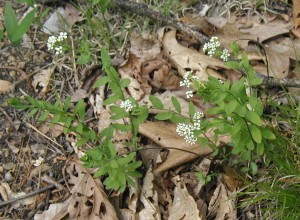
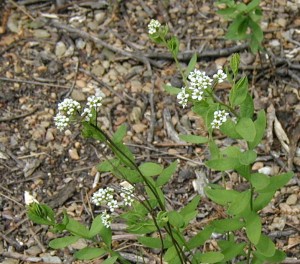
![Reblog this post [with Zemanta]](http://img.zemanta.com/reblog_e.png?x-id=f5855a6a-fe74-4301-8b82-d8d1ef2545fc)
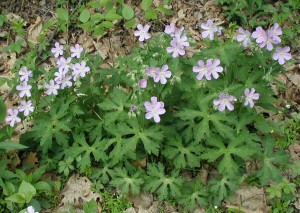
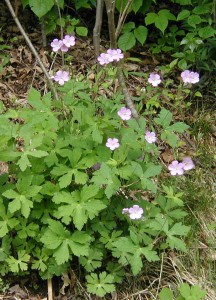
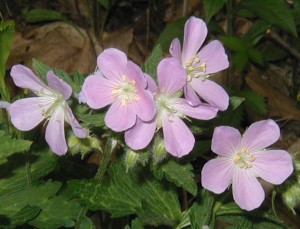
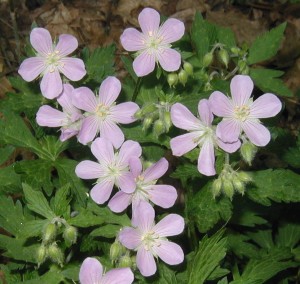

![Reblog this post [with Zemanta]](http://img.zemanta.com/reblog_e.png?x-id=3b872865-5f76-484a-a009-213c885824f2)
